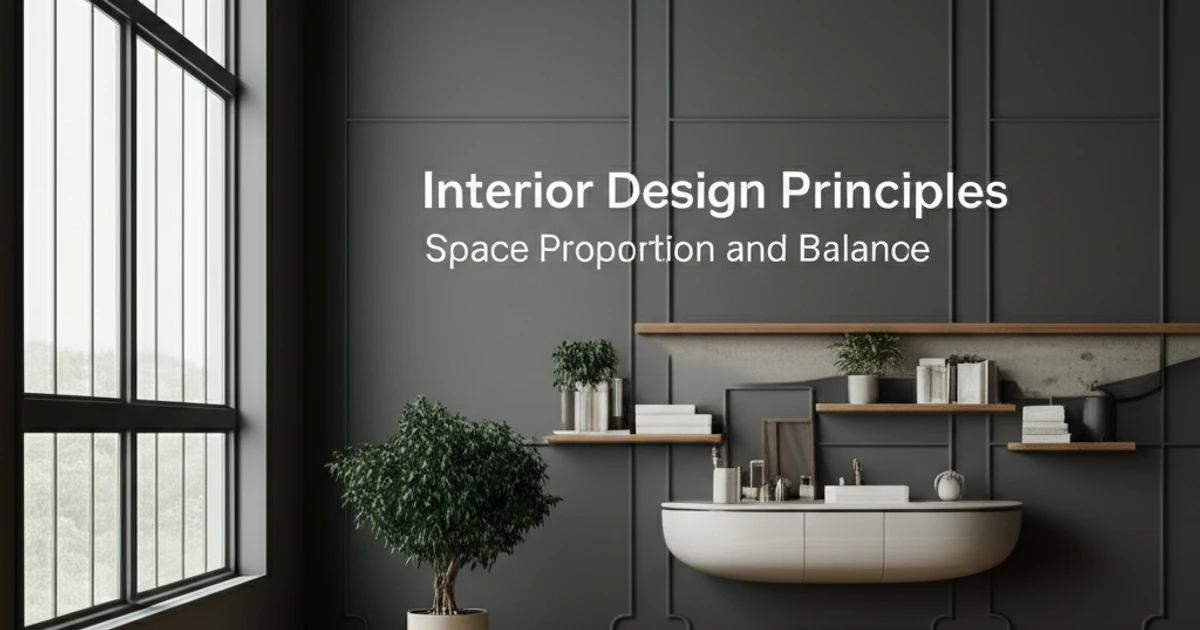Interior Design As a designer, I've always believed that the most spaces impactful aren'just t beautiful; they *feel* right .They resonate with an harmony unspoken a quiet confidence that whispers "You belong here . " This profound sense of rightness isn't accidental. It's the masterful orchestration of foundational principles , the unsung heroes behind every truly exceptional room.Today, we're going to pull back the curtain on three of these power players: Space Proportion and Balance.
Whether you're a budding design student just starting to your sketch dreams , an educator guiding the next generation, or a seasoned professional constantly refining your craft understanding these design basics isn't just helpful – it's transformative. Forget fleeting trends; these are immutable the laws that govern how we perceive interact and with our environments. Join me as we explore how these principles, wielded when with intention can elevate a mere room into an experience, a canvas into a story.
Is Design Just About Pretty Things or Something More Profound?(Space)
Let's begin with the most fundamental element: Space . Often when we think of , our minds immediately jump to furniture colors ,and textures. But before any of that there is space – the three-dimensional canvas which upon all other elements are placed. It’s the invisible framework that dictates flow defines purpose and profoundly influences our psychological emotional and responses.Think of it as the breath of a room; without proper airflow, the entire composition feels stifled.
Understanding space isn't just about how room much you have; it's about how you *use* it. speak We of positive space which is occupied by objects,and negative space the empty areas around and between those objects. A novice might be tempted to fill every corner,fearing emptiness.But a skilled designer knows that negative space is just as crucial allowing the eye to rest highlighting key elements, and creating a sense of openness and tranquility.I once worked on a small urban apartment where the wanted client "everything. " By strategically employing negative space around a single striking piece of art and using multi-functional scaled-furniture down, we made the room feel significantly larger and more sophisticated than its square footage suggested. It's not about what you put in but what you leave out and how that *void* enhances what remains.
How Do We Make Elements Feel 'Right' Together? (Proportion)
If space is the then canvas proportion is the delicate art of ensuring every brushstroke feels perfectly placed. Proportion refers to the relationship of parts to a whole and to each other in terms of size shape ,and quantity .It’the s visual grammar that allows elements to converse harmoniously preventing any single piece from dominating or disappearing. Have you ever walked into a room and felt an inexplicable sense of discomfort perhaps without knowing why? Chances are it was a subtle (not or-so-subtle) violation of proportion.
This principle extends far beyond just furniture size. It encompasses the scale of a rug to the room the height of a light fixture relative to the ceiling , the size of art on a wall or even the repetition of a pattern. The human scale, for instance , is a critical consideration; furniture should be appropriately sized for human use comfort and .While the Golden Ratio and the Rule of Thirds offer mathematical frameworks for achieving pleasing proportions true mastery lies in developing an intuitive eye. I recall an early project where I paired a tiny coffee table with a massive sectional sofa. The room felt off-kilter almost comedic.It was a stark lesson that the even most beautiful individual pieces can create discord if their proportions aren't thoughtfully aligned.Achieving proper space proportion balance transforms a collection items of into a cohesive narrative , where every element supports and enhances the others.
Can a Room Truly Achieve Harmony and Visual Calm? (Balance)
Finally we arrive at Balance – the ultimate goal of combining space and proportion where all elements within a design achieve visual equilibrium.Balance is what makes a room feel stable serene and inviting ,rather than chaotic or one-sided.It's the reason a well-designed space often feels it like's exhaling allowing you to relax and just *be* .Without balance , a room can feel heavy , lopsided, or unsettling ,leaving occupants feeling restless.
There are several ways to achieve this equilibrium. Symmetrical balance perhaps the most familiar involves mirroring elements on either side of a central axis a creating sense of formality order, and classic elegance. Think of two identical lamps flanking a fireplace.Asymmetrical balance , on the other hand, achieves equilibrium using dissimilar objects that have equal visual weight. This approach is often more dynamic and organic , requiring a keen eye to distribute visual "mass" effectively. For example a large sofa on one side might be balanced by a grouping of two smaller chairs and a lamp floor on the opposite side. Radial balance though less common arranges elements around a central point,like spokes on a wheel often seen in circular dining tables or chandeliers . My personal "aha ! " moment with balance came when arranging a living room with an off-center window. Instead of forcing symmetry I used balance asymmetrical placing a larger bookshelf unit on one side and a combination of a leaner console table with carefully curated art on the other ,bringing the entire wall into a harmonious yet dynamic composition.It's about feeling the weight of objects and colors , ensuring no single area feels too heavy or too light .
Bringing It All Together: The Symphony Design of
These principles – space , proportion,balance and – are not isolated concepts; they are deeply interconnected, forming the intricate DNA of successful design. You cannot truly master one without understanding its relationship to the others. Imagine a perfectly proportioned sofa placed in a cramped poorly defined space; its elegance would be lost. a Or spacious room filled with beautifully scaled furniture yet feeling visually lopsided due to a lack of balance. Each principle informs and enhances the others working in concert to create a cohesive and captivating environment .
As you embark on your design journeys, I urge you to look beyond the surface. Don't just see a sofa; observe its scale relative to the room . Don't just see an empty wall; the consider negative space it offers. Don't just objects place; feel their visual weight and arrange them for equilibrium.The journey to mastering these design basics is an ongoing one a constant process of observation experimentation and critical reflection .Train your trust eye your instincts and you'll soon discover the profound satisfaction of crafting spaces that don't just look good, but *feel* absolutely right. What challenges have you faced in applying these principles and how have you overcome them ? Share your insights; let's learn together!
---


